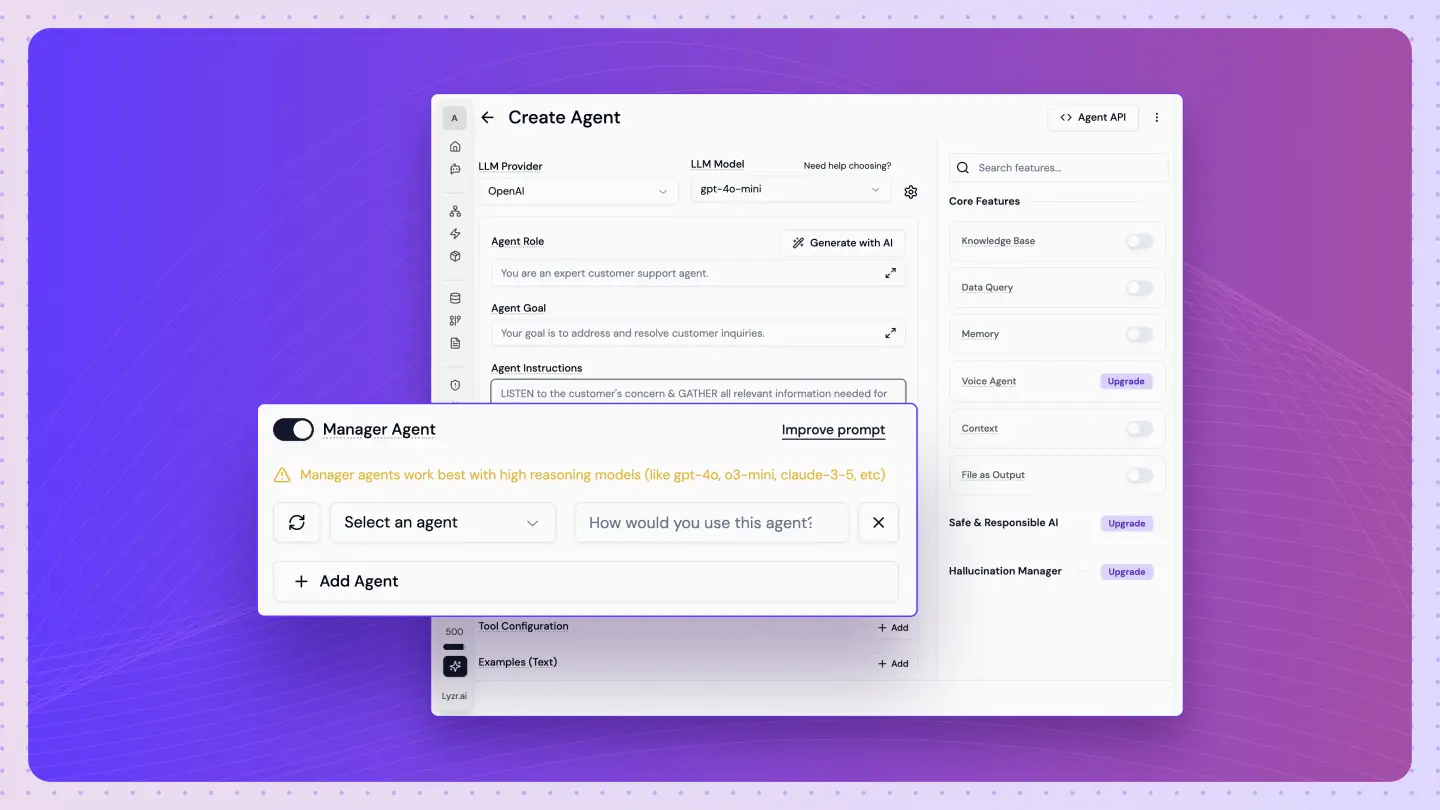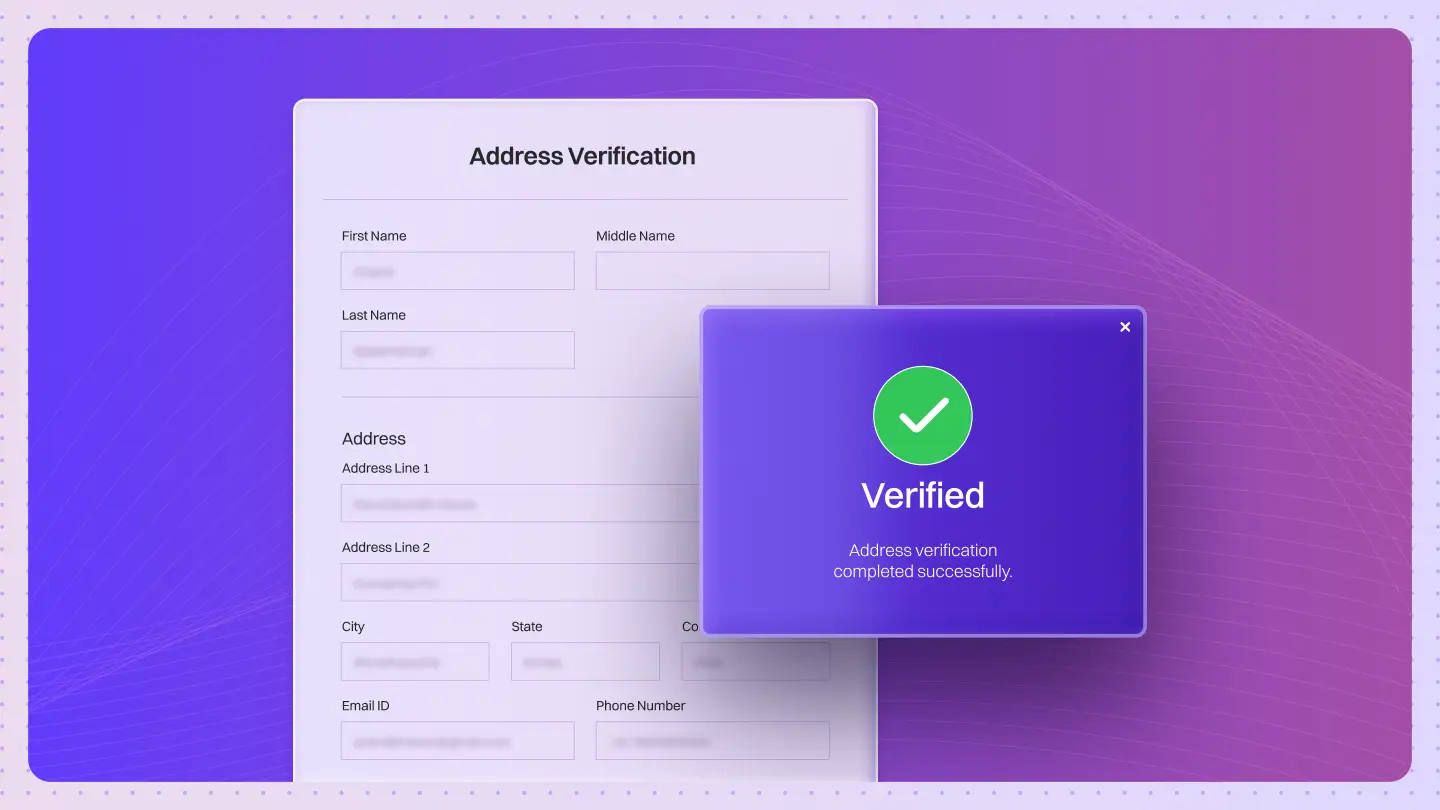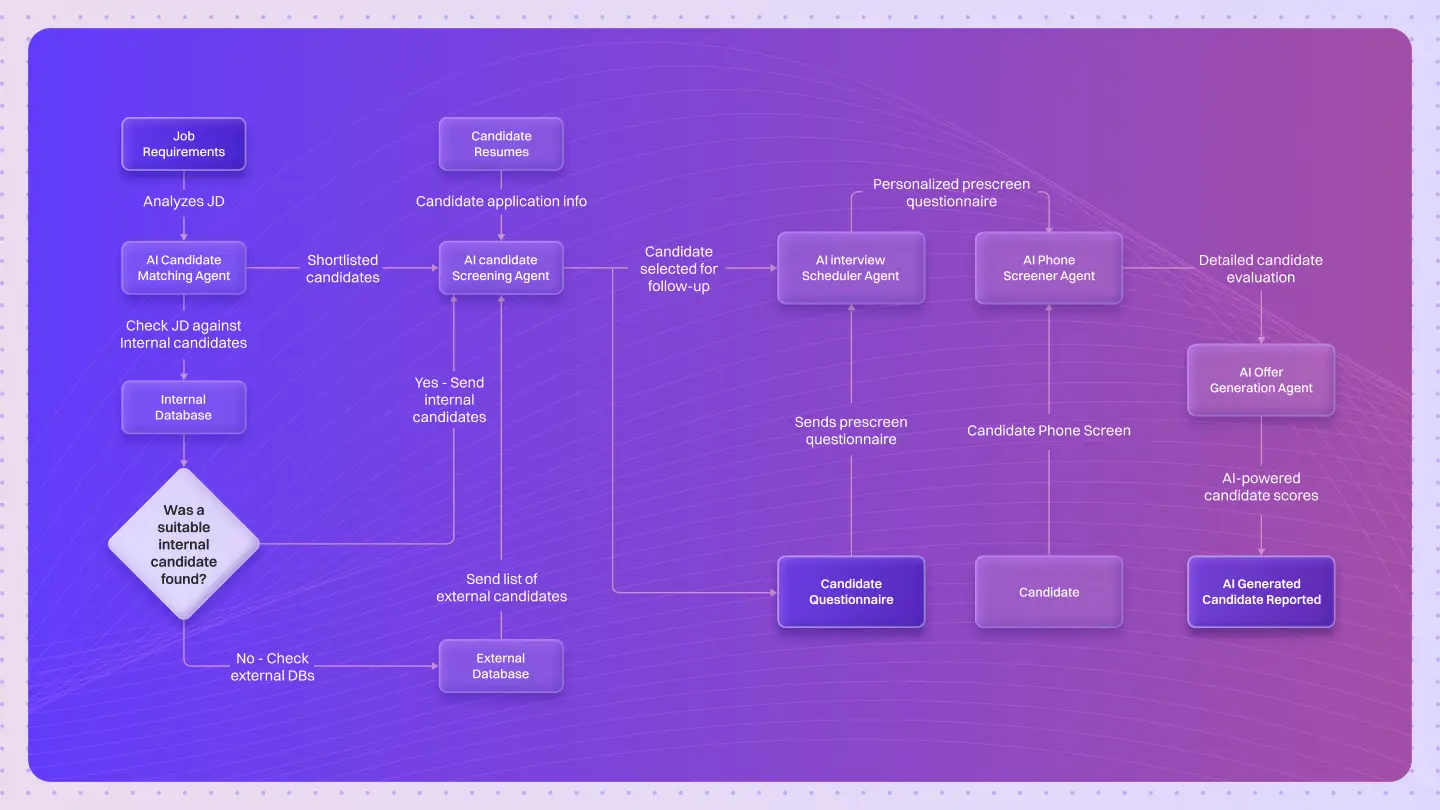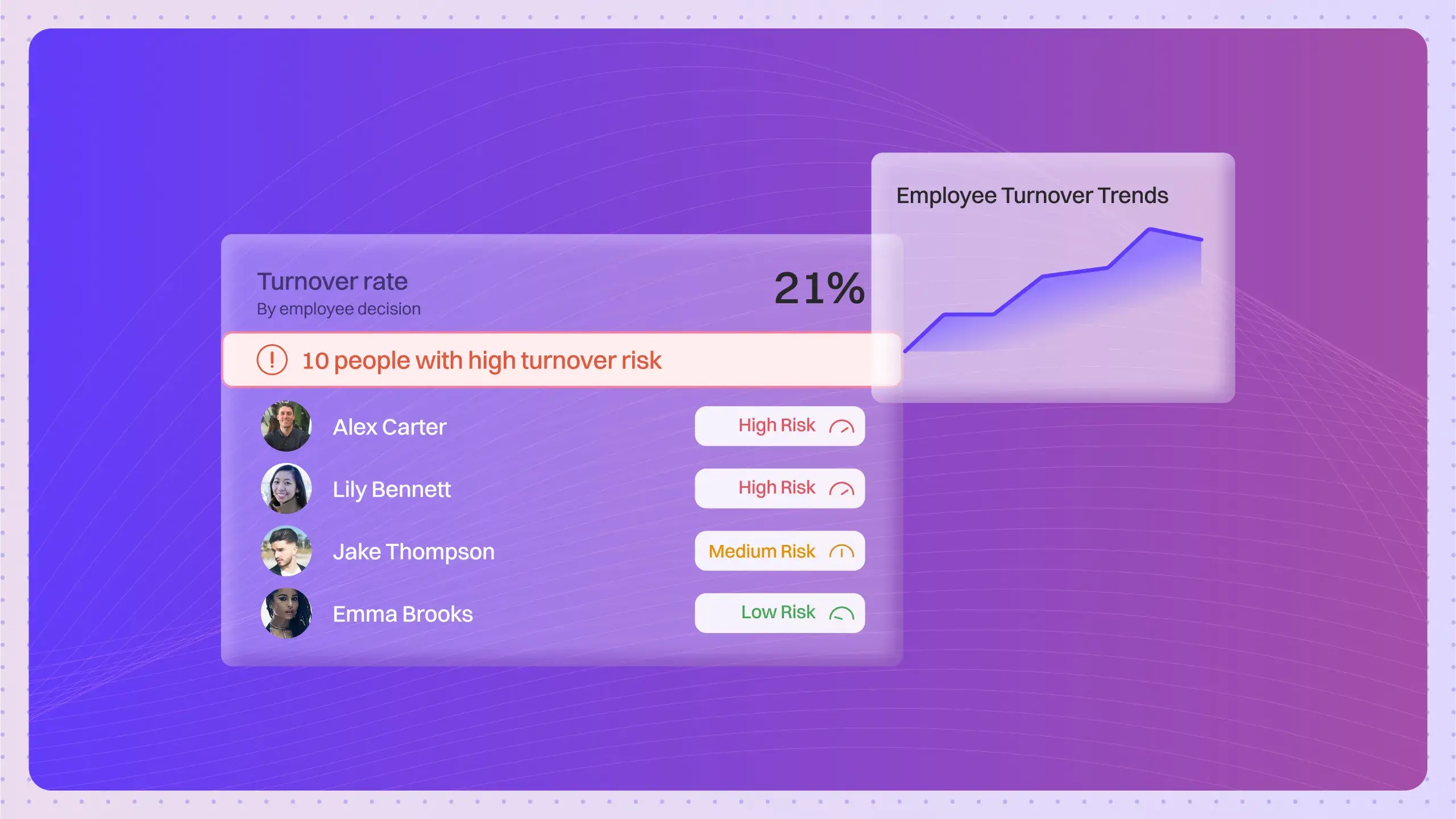Table of Contents
ToggleAI workflows are rarely simple. A single agent handling multiple responsibilities can quickly become complex, brittle, and hard to debug.
That’s why Lyzr Studio introduces Manager Agents.
A Manager Agent acts as the orchestrator for a team of specialized managed agents. Instead of one agent trying to do everything, each managed agent focuses on a specific task, like parsing input, generating a response, or updating records.
The Manager Agent coordinates these subtasks, collects results, and ensures the workflow executes as intended.
For developers, this architecture offers modularity and composability. Workflows can be broken down into smaller, reusable units, making them easier to maintain, test, and scale.
In this blog, we’ll explore how Manager Agents work under the hood, how to configure them in Studio, and patterns for building robust multi-agent workflows that balance flexibility with control.
What is a Manager Agent in Studio?
At its core, a Manager Agent in Lyzr Studio is designed to orchestrate multiple specialized agents, known as managed agents, within a single workflow. Instead of building one monolithic agent to handle every task, developers can create modular pipelines where responsibilities are clearly separated.
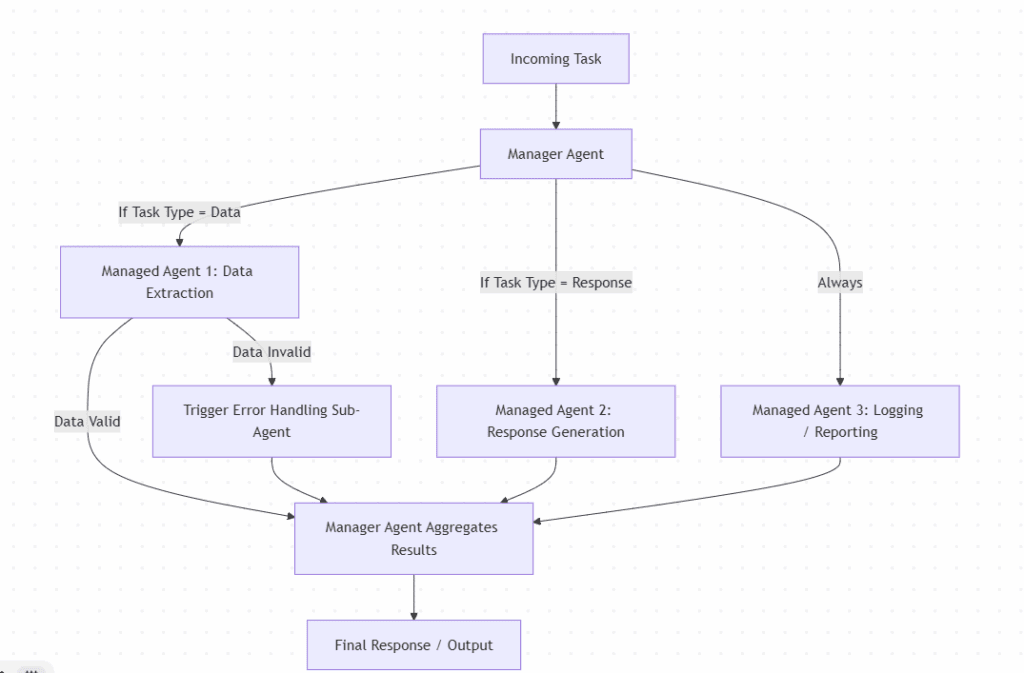
In Studio, enabling a Manager Agent is straightforward: it acts as the central coordinator that receives a task, determines which managed agent(s) should handle it, and aggregates their outputs.
Each managed agent comes with a name and a usage description, which essentially defines its role in the workflow and informs the Manager Agent how to interact with it.
How It Works & Developer Internals
Under the hood, a Manager Agent is essentially an orchestrator that routes tasks to one or more managed agents based on their designated responsibilities. In Lyzr Studio, this orchestration is defined in the agent’s configuration, which developers can inspect and modify directly.
JSON Configuration Reference
"managed_agents": [
{
"id": "67f632f43e4bcae4a5cfd109",
"name": "Mail Generator",
"usage_description": "Generate a proper diet plan and mail it to the user, whenever the user starts to chat ask for their mail ID 1st"
}
]
| Field | Type | Description |
|---|---|---|
id | string | Unique identifier for the sub-agent (from the Agent Database) |
name | string | Friendly name for clarity |
usage_description | string | Detailed instruction to guide invocation logic |
When the Manager Agent receives a task, it evaluates which sub-agent(s) should handle it, this can be sequential, parallel, or conditional depending on workflow design. Inputs are passed to the managed agents, which process their specific tasks and return outputs. The Manager Agent then aggregates these outputs into a final result.
Error handling and fallback logic are crucial. If a managed agent fails or returns an unexpected output, the Manager Agent can reroute the task, trigger a fallback agent, or log the issue for debugging.
This makes multi-agent workflows more robust while giving developers granular control.
Developers can also extend orchestration logic programmatically through APIs, allowing dynamic selection of managed agents based on runtime conditions. This flexibility makes the Manager Agent a powerful framework for building scalable, maintainable, and composable AI workflows without hardcoding complex logic in a single agent.
Step-by-Step: Configuring in Studio
Setting up a Manager Agent in Lyzr Studio is designed to be straightforward, while giving developers precise control over workflows. Here’s how to get started:
Step 1: Enable Manager Agent
In the Studio UI, toggle the Manager Agent option when creating or editing an agent. This switches the agent from a standalone mode to a coordinator mode, ready to orchestrate multiple managed agents.
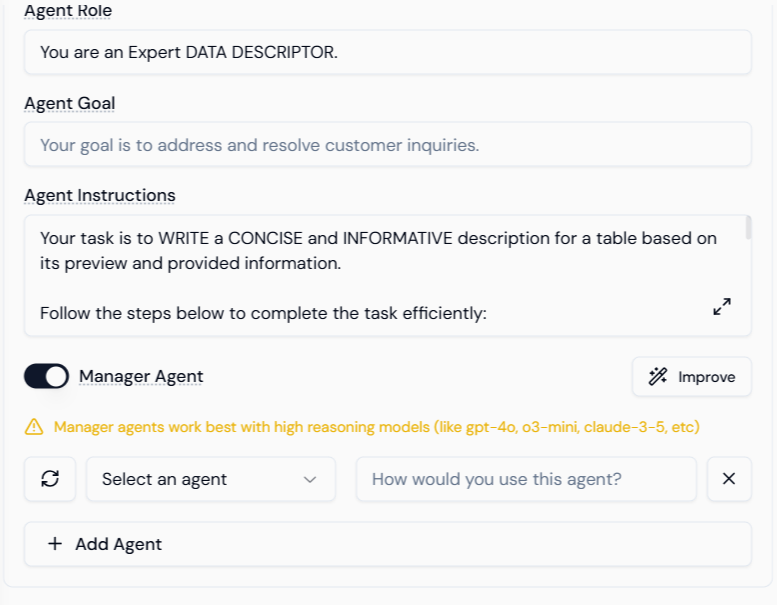
Step 2: Add Multiple Managed Agents
Repeat the process to add additional agents for other tasks. Each agent should have a clear, single responsibility to keep workflows modular and maintainable.
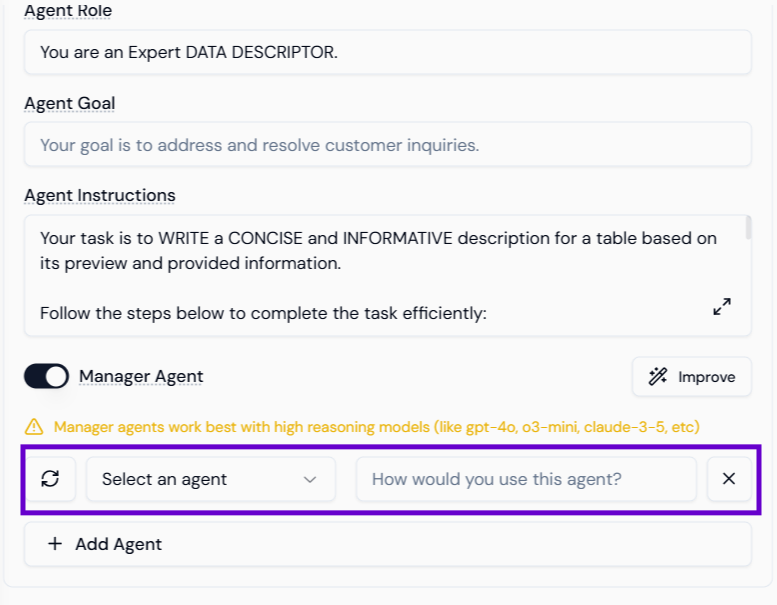
Step 4: Configure Task Flow
Define the order or conditions in which managed agents are invoked. You can chain them sequentially, run them in parallel, or create conditional branching based on runtime inputs.
Summary & Next Steps
Manager Agents in Lyzr Studio provide a structured way to orchestrate multiple specialized agents, breaking complex workflows into modular, manageable components. By delegating responsibilities to purpose-built managed agents, developers can build workflows that are easier to maintain, test, and scale.
From configuring agents in Studio to defining execution flows and handling errors, Manager Agents give developers both flexibility and control.
Next steps for developers: experiment with creating Manager Agents, reuse managed agents across different workflows, and explore chaining or conditional logic to handle more advanced scenarios.
Book A Demo: Click Here
Join our Slack: Click Here
Link to our GitHub: Click Here

